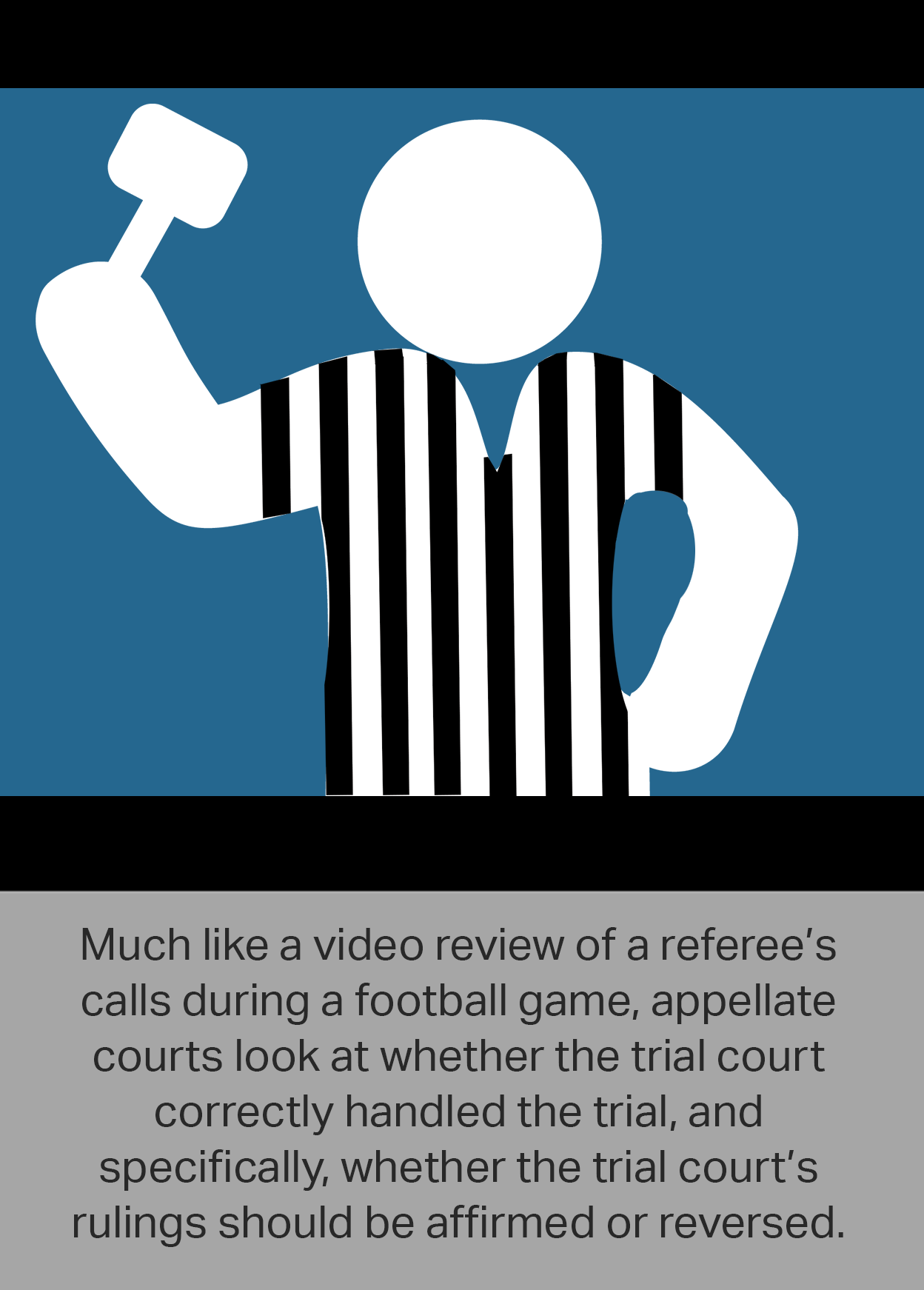Med Mal 101: Back to Basics is 12-part series produced by Friday, Eldredge & Clark. Written by the attorneys in the Medical Malpractice Group, the content is designed to give physicians and other healthcare providers information they need to know about malpractice litigation.

As discussed in Part 11, if the jury or, in a bench trial, the trial judge renders a verdict that is adverse to a party’s position, the party has the right to appeal that verdict.
It is important to note that an appeal does not constitute a retrial of the case. Appellate courts are charged only with reviewing whether the proceedings in the trial court were conducted in accordance with the law. Much like a video review of a referee’s calls during a football game, appellate courts look at whether the trial court correctly handled the trial, and specifically, whether the trial court’s rulings should be affirmed or reversed. In other words, appeals usually have to do more with whether the proceedings themselves were fair, not with challenging who won or lost at the trial level.
The party appealing the verdict is referred to as the “appellant” or sometimes as the “petitioner.”[1] The other party is called the “appellee” or the “respondent.”[2]

To initiate an appeal, the appellant must file a notice of appeal with the clerk of the circuit court where the case was heard.[3] The notice of appeal must be filed within a particular period of time following the entry of the judgment, though there are avenues for the appellant to seek an extension in time to file the notice if needed. [4]
After filing the notice of the appeal, the appellant must also file the record on appeal.[5] The record includes, among other things, pleadings filed in the case, the transcript of the trial, and copies of exhibits. Failure to file the record on appeal within the time period prescribed by the rules may result in dismissal of the appeal.[6] Just as with the notice of appeal, the time to file the record may be extended by order of the circuit court.[7]
The party bringing the appeal must file a brief explaining why he or she believes that the trial court erred. After lodging the record, the appellant must file his or her brief with the appellate court and furnish evidence of service upon opposing counsel and the circuit court.[8] The appellee then must file a timely brief in response.[9] The appellant is allowed to file a reply brief as well.[10]
Any party may request oral argument before the appellate court by filing a letter stating the request with a copy to all parties.[11] Further, the appellate court may at its discretion select any case for oral argument.[12] Oral argument will typically be allowed unless the appellate court determines that the argument is unnecessary based on provided briefs and record, if the issue presently on appeal has been decided authoritatively, or if the appeal is frivolous.[13] During an oral argument, each parties’ attorney is allotted a fixed amount of time to argue the case to the appellate court and to answer questions from the court.[14] In state court in Arkansas, only two attorneys may be heard for each side.[15]
Once the appellate court has reached a decision, it will issue an opinion with its findings. The court may “affirm” the ruling of the trial court, which means that it agrees with the trial court’s decision.[16] The court may also “reverse” the ruling, which means that it disagrees with the trial court and overturns the decision by the trial court.[17] When a ruling is reversed, the appellate court may “remand” the case back to the trial court, which means it sends the case back to the trial court for some further action to take place, such as a new trial or for the trial court to rule consistently with the holding of the decision by the appellate court.[18] In this way, citizens are assured that they not only can be heard in the trial courts, but that there is an avenue to ensure that the proceedings are fair.
[1] How Courts Work: Steps in A Trial – Appeals, American Bar Association (Sept. 9, 2019),
[2] How Courts Work: Steps in A Trial – Appeals, American Bar Association (Sept. 9, 2019),
[3] Ark. R. App. P. – Civ. 3(b).
[4] Ark. R. App. P. – Civ. 4(a)-(b).
[5] Ark. R. App. P. – Civ. 3(b).
[6] Ark. R. App. P. – Civ. 3(b), 5(a).
[7] Ark. R. App. P. – Civ. 5(a)-(b).
[8] Ark. Sup. Ct. R. 4-4(b).
[9] Ark. Sup. Ct. R. 4-4(c).
[10] Ark. Sup. Ct. R. 4-4(d).
[11] Ark. Sup. Ct. R. 5-1(a).
[12] Ark. Sup. Ct. R. 5-1(a).
[13] Ark. Sup. Ct. R. 5-1(a).
[14] How Courts Work: Steps in A Trial – Appeals, American Bar Association (Sept. 9, 2019),
[15] Ark. Sup. Ct. R. 5-1(c).
[16] Affirm, Black's Law Dictionary (11th ed. 2019).
[17] Reverse, Black's Law Dictionary (11th ed. 2019).
[18] How Courts Work: Steps in A Trial – Appeals, American Bar Association (Sept. 9, 2019),
The information was written by the attorneys in the Medical Malpractice Group at Friday, Eldredge & Clark, LLP. This information is not a substitute for legal advice and should be considered for general guidance only. For more information, please contact one of our Medical Malpractice Attorneys.
The 12-month series will include the following topics: